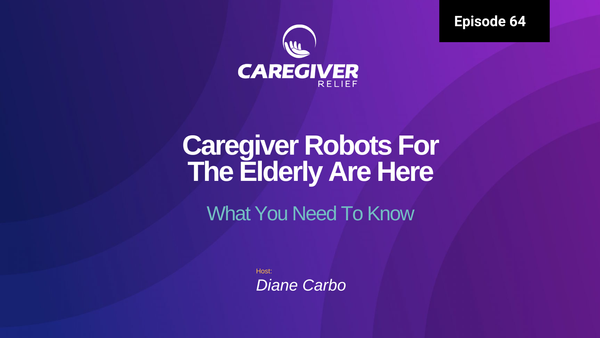Who Qualifies for VA benefits for Assisted Living?

What are VA Benefits for Assisted Living?
Veterans Affairs (VA) benefits for assisted living provide support and services to veterans who are elderly, disabled, or in need of help with activities of daily living. The VA offers multiple types of assistance to help veterans remain independent and in their own homes. These benefits vary according to the individual veteran’s eligibility and can include financial assistance, home modifications, long-term care insurance, and other supportive services.
This guide will provide an overview of the VA benefits available for assisted living, help you understand who qualifies, and explain how to apply for benefits. It will also discuss alternative options should you not be eligible for VA assistance, plus provide helpful tips and resources to maximize your benefits.
Who is Eligible for VA Benefits for Assisted Living?
The VA has strict eligibility requirements for receiving benefits for assisted living. To qualify, a veteran must meet certain criteria related to military service, disability ratings, and household income/assets. Depending on the type of benefit, additional requirements may also apply.
In order to receive VA benefits for assisted living, veterans must have:
- Served in the U.S. Armed Forces, Reserves, or National Guard in a recognized capacity (active duty, active duty for training, or inactive duty for training).
- Received a discharge or release from service other than dishonorable.
- Received a disability rating of at least 30%, or have been determined by VA to be unemployable due to a service-related disability.
- Meet specific income and asset limits, depending on the type of benefit being applied for.
Who Qualifies for VA Benefits for Assisted Living?
For veterans and service members to receive VA benefits for assisted living, they must meet certain eligibility criteria. This includes having served at least 90 days of active duty military service, with at least one day served during wartime. Additionally, veterans must have received an honorable or general discharge from the military and have a service-connected disability rating of 70 percent or higher in order to be eligible for VA benefits.
Income is also taken into account; veterans must have annual household incomes below the maximum limit set by the Department of Veterans Affairs. Assets are also considered; certain assets, such as income property, can affect the amount of VA aid received. Additionally, veterans must choose an assisted living facility that is approved by VA before they can receive financial assistance.
VA Benefits for Assisted Living
The VA provides a range of services and benefits to help veterans access assisted living. From home modifications to long-term care insurance, the VA's benefits for assisted living can make life easier and more comfortable for veterans.
Home modifications are one of the most common benefits from the VA for assisted living. These modifications can include installing ramps, widening doorways and hallways, and constructing grab bars for safety. These adaptations make it easier for veterans to move around their homes and remain independent.
Additionally, the VA offers long-term care insurance to provide financial protection to veterans who require assisted living. This insurance pays for or reimburses long-term care expenses, such as skilled nursing facilities, home health care, respite care, and adult daycare. It also covers specialized services, such as physical therapy and recreational activities.
Financial assistance is another benefit from the VA for assisted living. Certain veterans may be eligible for a pension that helps pay for in-home care or assisted living. In some cases, the VA will pay up to 80 percent of the cost of medical and nursing care in an assisted living facility.
Finally, the VA also has a number of additional resources available for veterans seeking assisted living services, such as transitioning programs, caregiver support, and home health aides.
Applying for VA benefits for assisted living can be a complicated process. However, with the right information and resources, veterans and their families can navigate the process successfully. In this section, we’ll outline the steps necessary to apply for VA benefits for assisted living.
Step 1: Determine Eligibility
Before applying, it is important to determine your eligibility. To qualify for VA benefits for assisted living, you must meet certain criteria related to military service, disability ratings, and household income and assets. You can learn more about these requirements in the “Who Qualifies?” section of this guide.
Step 2: Gather Necessary Documentation
Once you have determined your eligibility, you will need to gather and prepare any necessary documentation for your application. This includes forms related to your military service and any applicable disability or financial documents. It is wise to organize this information before submitting your application, as it will speed up the process.
Step 3: Submit Application
The next step is to submit your application for VA benefits. You can do so by contacting your local VA office or by filling out an online form. Once the application is received, the VA will review it and reach out to you with any additional questions or requirements.
Step 4: Await Approval
The final step in the process is to await approval from the VA. This can take several weeks, and you may be asked to provide additional information or documentation during this time. Once your application is approved, you can start taking advantage of VA benefits for assisted living.
These are the steps necessary to apply for VA benefits for assisted living. Although the process can seem daunting, make sure to take your time and follow the directions as closely as possible. With the right resources and information, you can successfully apply for VA benefits.
For veterans who may not qualify for VA benefits for assisted living, there are still other options that can help. Medicare and Medicaid both have coverage for certain long-term care services, and many private insurance policies also provide some coverage for various levels of care. Additionally, there are a number of non-profit organizations and state and local government programs that can provide financial support or other assistance to veterans in need.
For veterans looking for additional resources, a good starting point is to contact their local Area Agency on Aging. These offices can provide information about state and local programs that may cover assisted living expenses as well as other resources, from meal delivery to home repairs.
Veterans can also contact the Supportive Services for Veteran Families (SSVF) program, which offers a variety of services that can help veterans remain independent in their homes or transition into assisted living facilities. The Veterans Benefits Administration (VBA) provides online tools such as the Veterans Pension Benefit Calculator that can help veterans estimate their benefits. Finally, veteran service organizations such as the American Legion and Disabled American Veterans have dedicated teams of staff that can help veterans understand their benefits and access the services they need.
Getting the most out of VA benefits for assisted living can be a challenge, but there are some simple tips and tricks that can help maximize benefits and minimize costs. Here are some of the ways veterans can make sure they are taking full advantage of their VA benefits for assisted living:
- Familiarize Yourself with Eligibility Requirements: Make sure you understand the eligibility requirements for VA benefits for assisted living, as this will help ensure that you qualify for the maximum amount of assistance available to you.
- Gather Necessary Documentation: Ensure you have all necessary documents to apply for VA benefits for assisted living, such as military discharge papers, medical records, and tax returns.
- Work with an Advisor: If you need help understanding the process or applying for VA benefits for assisted living, consider working with an experienced advisor who can provide guidance.
- Research Long-term Care Insurance Options: Take the time to research long-term care insurance options from private providers that can supplement your VA benefits for assisted living.
- Look Into Private Financial Assistance: Explore private financial assistance options, such as grants and loans, that may be available to help cover the costs of assisted living.
- Make Connections with Local Resources: Connect with local veteran organizations, senior centers, and other community resources that may be able to provide additional assistance for veterans looking to access VA benefits for assisted living.
By following these tips and tricks, veterans can make sure they are getting the most out of their VA benefits for assisted living.
FAQs
When it comes to VA benefits for assisted living, there are many questions that veterans and their family members may have. To help answer these questions, we’ve compiled a list of the most common queries below.
- Who is eligible for VA benefits for assisted living?
- What types of services and benefits are available through the VA?
- How do I apply for VA benefits for assisted living?
- Are there any alternatives to VA benefits for assisted living?
- What tips can I follow to maximize my benefits and minimize costs?
We understand that the application process can be daunting – even for experienced veterans. If you have questions or need help navigating the process, please don’t hesitate to contact your local VA resource center for assistance.
Enabling access to VA benefits for assisted living is an extremely important factor in ensuring that veterans receive the care they need. This guide has discussed the eligibility criteria, types of services/benefits available, how to apply, alternative options, tips and tricks, common questions, and helpful resources concerning VA benefits for assisted living. By utilizing this information, veterans may be able to obtain the support and assistance necessary to live a comfortable life. For more information on VA benefits for assisted living, please visit the resource list provided in this guide or contact a local veteran resource center.
Are you a veteran who needs help accessing VA benefits for assisted living? It can be daunting to navigate the process and understand all the resources available, but you don’t have to do it alone. We’ve compiled a list of helpful resources and contact information for veterans looking to access VA benefits for assisted living.
The Department of Veterans Affairs (VA) is the primary resource for veterans seeking information on VA benefits for assisted living. The VA operates a toll free number, 1-800-827-1000, where you can speak with a VA customer representative about your eligibility and the types of assistance available. You can also visit the VA website, veterans.gov, to learn more about VA benefits for assisted living and how to apply.
The National Center for Assisted Living (NCAL) is another key resource. NCAL offers educational materials, insights, and other helpful information to those looking to understand the benefits and services offered by the VA for assisted living.
It’s also important to stay connected with the local community. The VA operates many local centers and offices throughout the country, offering support and assistance with benefits claims and other services. Visit the VA website to find the nearest VA center or office in your area.
You should also consider joining a veteran support group in your area. These groups offer a sense of camaraderie and help with navigating the VA system. Check your local listings and online to find out which groups are available in your area.
Finally, there are numerous organizations dedicated to helping veterans and their families with understanding and accessing VA benefits. Organizations such as American Veterans (AMVETS), Disabled American Veterans (DAV), and Veterans of Foreign Wars (VFW) all provide veteran-specific assistance and resources.
Take advantage of these resources to ensure you get the most out of VA benefits for assisted living. Doing so can significantly reduce the stress and frustration often associated with the process.
Glossary of Terms Relating to VA Benefits for Assisted Living
Applying for VA benefits for assisted living can be confusing, so it is important to understand the language used when discussing these services and programs. Below are definitions for some of the most common terms related to VA benefits for assisted living.
- Assisted Living: Assisted living is a type of long-term care that combines housing, support services, and health care for seniors or people with disabilities. It is often a less expensive and more home-like alternative to nursing homes that provides more independence while still offering assistance in activities of daily living.
- VA Benefits: VA benefits are offered through the Department of Veterans Affairs and include assistance in areas such as health care, housing, education, and more. These benefits may also extend to spouses and dependent children of veterans.
- Pension Benefit: The Pension Benefit is a benefit paid by the VA to wartime veterans who have limited or no income and meet certain other eligibility criteria.
- Aid & Attendance Benefit: The Aid & Attendance Benefit is a supplement to the Pension Benefit that provides additional funds to help cover the costs of long-term care, including helping to pay for assisted living services.
- Housebound Benefit: The Housebound Benefit is a supplement to the Pension Benefit that provides additional funds to help cover the costs of long-term care for veterans who cannot leave their home due to permanent disability.
- Long-Term Care Insurance: Long-term care insurance is a type of policy designed to help cover the costs of long-term care services, including those associated with assisted living. These policies are typically purchased privately.
- Home Modifications: Home modifications are changes made to a home to make it more suitable for a person's specific needs. These modifications may include installing ramps, widening doorways, or creating other accessible features.
- Durable Medical Equipment: Durable medical equipment (DME) is any medical equipment that can withstand repeated use and is typically prescribed for a medical purpose. This may include wheelchairs, walkers, and other mobility devices.
Case Studies of Veterans Accessing VA Benefits for Assisted Living
When looking at the big picture of what veterans may be eligible to receive in terms of assisted living benefits from the VA, unfortunately there is no one-size-fits-all answer. However, the following case studies provide real-life examples of how some veterans were able to receive the assistance they needed.
- John Doe: John Doe served in the United States Marine Corps for 20 years and was medically retired after being diagnosed with PTSD. He applied for VA benefits for assisted living and was approved for a grant that allowed him to modify his home and make it wheelchair accessible. This grant also allowed him to stay in his home and receive in-home care.
- Jane Smith: Jane Smith was a lieutenant in the Army for eight years before she was medically discharged due to a back injury. She applied for VA benefits for assisted living and was approved for long-term care insurance, which covered up to 80% of her assisted living facility fees. She was also approved for financial assistance, which covered the remaining 20%.
- Eric Johnson: Eric Johnson was an Army staff sergeant who served for 15 years before being medically retired due to knee issues. He applied for VA benefits for assisted living and was approved for a home modification grant to make necessary adjustments to his home. He also received financial assistance and long-term care insurance to cover the costs of his assisted living facility.
These case studies demonstrate the various ways veterans can access the benefits they need to age comfortably and safely in their home or in an assisted living facility.
Take Action Now
If you or a loved one are a veteran and interested in accessing VA benefits for assisted living, there is no better time than now to take action. We strongly encourage readers to contact their local veterans resource center for more information and assistance.
To help spread the message, share your thoughts and experiences about VA benefits for assisted living. Talk to your friends and family about the options available to veterans and the impact of these benefits. Your voice can help make a difference for our nation’s heroes.
You might also like this article:






